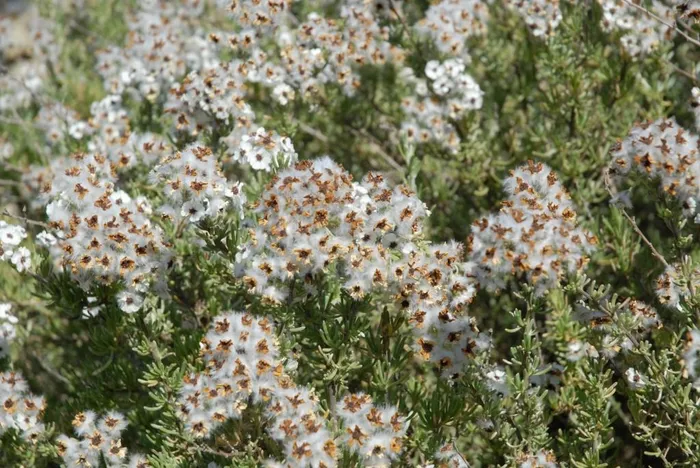Reviving indigenous crops: a solution to food security challenges in South Africa
South African scientists lead the charge to bring forgotten plants back to our plates

A team from the University of Pretoria (UP) is ensuring that “ignored and orphan crops” find their way back on the menu.
Image: Shutterstock
While the world races toward the 2030 deadline for the United Nations' Sustainable Development Goals (SDGs), we're falling behind on ending hunger and food insecurity. But University of Pretoria researchers are championing a revolutionary approach: reintroducing indigenous and orphan crops to our food system to combat both nutritional deficiencies and the the loss of agricultural biodiversity.
"Of the world's 400,000 plant species, just six of them account for 57% of the primary crop production (around 9.5 billion tonnes)," explained Dr Hennie Fisher of the Department of Consumer and Food Science. These crops include sugar cane, maize, rice and wheat.
"With about 3.2 billion people worldwide unable to afford a healthy diet and 900 million people experiencing severe food insecurity, we need to move away from diets that contain higher proportions of cheaper, nutrient-poor, highly processed foods, and embrace the value of indigenous crops."
The issue goes beyond just accessibility to food. It's about the quality and diversity of what we eat. According to Richard Hay, curator of the Future Africa Institute's Indigenous and Orphan Crops Collection, many native plant species offer superior nutritional profiles while being naturally suited to local growing conditions.
"By eating a wider variety of plant species and diversifying our diets, we can build resilience into the food system while improving health outcomes for consumers," he said.The globalisation of agriculture has come at a steep price. With industrial farming focusing on a handful of high-yield crops, approximately 75% of global crop genetic diversity has vanished as farmers abandon traditional varieties for commercially developed cultivars. This trend not only diminishes our food culture but also creates vulnerable food systems dependent on a narrow genetic base.
The human cost of this dietary narrowing is alarming. Reliance on cheaper, nutrient-poor foodstuffs has contributed to a surge in diet-related non-communicable diseases such as obesity, diabetes and hypertension. According to Stats SA, South Africa alone saw deaths related to these diseases increase by 58.7% over 20 years (1997–2018).
To address this critical issue, Dr Fisher's team is focusing on changing attitudes and behaviours through education. "Our work focuses on combating global dietary homogenisation by screening consumer acceptance of underutilised plant species among young consumers, and determining if exposure to novel plant species through the teaching and learning environment is likely to alter future cooking behaviours," he explained.
In a promising experiment, 38 second-year BConsumer Sciences and BSc Culinary Science students prepared recipes using both conventional herbs and indigenous alternatives sourced from the Future Africa Indigenous and Orphan Crops Collection.The results were encouraging: students found both indigenous species – African wild rosemary (Eriocephalus africanus) and golden sage (Salvia aurea) – to be viable alternatives to common rosemary (Salvia rosmarinus) and sage (Salvia officinalis). An impressive 82% of participants reported they would likely use African wild rosemary in their future cooking. While golden sage received somewhat less enthusiasm, the experience nonetheless motivated 65% of the students to explore other indigenous herbs in their culinary practices
Perhaps most significantly, all participants expressed interest in having more indigenous herbs incorporated into their practical curriculum, suggesting a genuine openness to expanding culinary horizons.
These findings offer hope in the battle against what Hay calls the "blanding" of our global food diversity. "Slowing down a full-blown 'blanding' of our global food diversity may be achievable if we understand how modern consumers accept and appreciate a wider diversity of edible plants," he notes.
For South Africans, the reincorporation of indigenous foods represents both a return to cultural roots and a step toward a more sustainable, health-promoting food system. By embracing the rich diversity of local crops – from amaranth and Bambara groundnuts to cowpeas and indigenous spinaches – consumers can improve their nutritional intake while supporting agricultural practices better suited to local conditions. The University of Pretoria's initiative demonstrates that with proper education and exposure, younger generations are willing to embrace indigenous alternatives, potentially reversing the tide of food homogenisation that threatens both our health and our cultural heritage.
As we approach the 2030 deadline for the SDGs, perhaps the answer to global food security lies not in further intensifying production of a few global crops, but in rediscovering and celebrating the thousands of nutritious, locally-adapted plants that have nourished communities for generations.